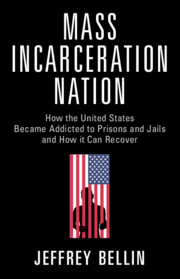 Mass Incarceration Nation
Mass Incarceration Nation Crime, Outrage, and Harsher Laws
from Part II - The Building Blocks of Mass Incarceration
Published online by Cambridge University Press: 03 November 2022
Prisons in this country did not fill simply because crime went up, police arrested more people, and judges sent them to prison. The crime surge’s primary contribution was that it fostered an environment where politicians and the public became attracted to harsh criminal laws. The steady ratcheting up of the severity of American criminal law played a larger role in Mass Incarceration than the transitory crime rise. This chapter introduces the critical punitive pattern: crime leads to public outrage, and outrage leads to harsher laws.
To save this book to your Kindle, first ensure [email protected] is added to your Approved Personal Document E-mail List under your Personal Document Settings on the Manage Your Content and Devices page of your Amazon account. Then enter the ‘name’ part of your Kindle email address below. Find out more about saving to your Kindle.
Note you can select to save to either the @free.kindle.com or @kindle.com variations. ‘@free.kindle.com’ emails are free but can only be saved to your device when it is connected to wi-fi. ‘@kindle.com’ emails can be delivered even when you are not connected to wi-fi, but note that service fees apply.
Find out more about the Kindle Personal Document Service.
To save content items to your account, please confirm that you agree to abide by our usage policies. If this is the first time you use this feature, you will be asked to authorise Cambridge Core to connect with your account. Find out more about saving content to Dropbox.
To save content items to your account, please confirm that you agree to abide by our usage policies. If this is the first time you use this feature, you will be asked to authorise Cambridge Core to connect with your account. Find out more about saving content to Google Drive.